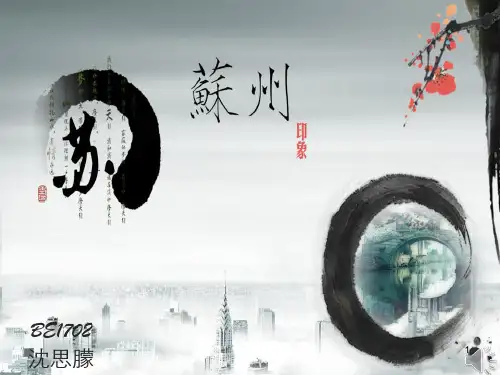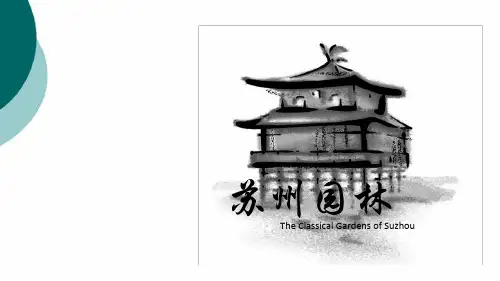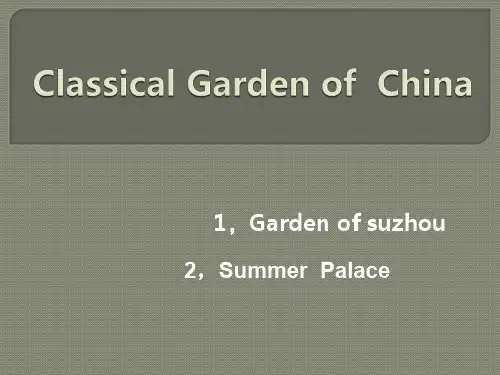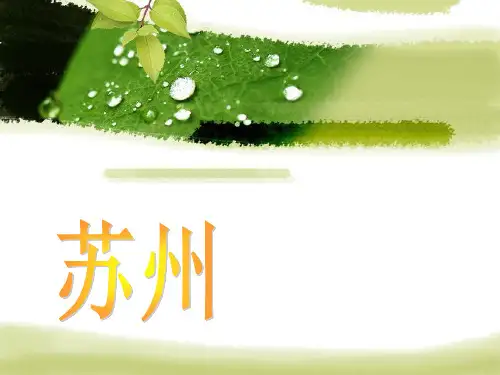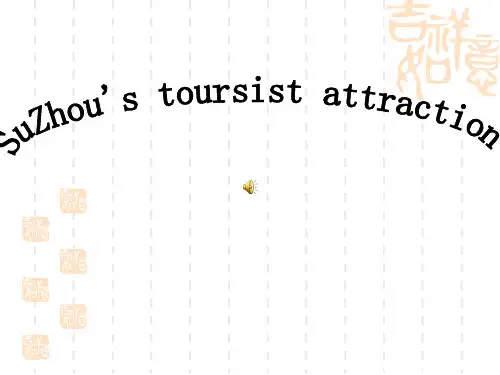苏州英文介绍 PPT
- 格式:ppt
- 大小:3.70 MB
- 文档页数:25
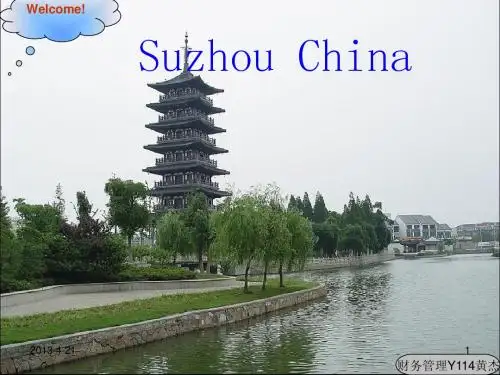
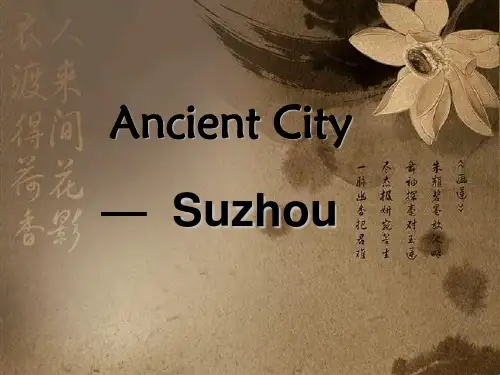

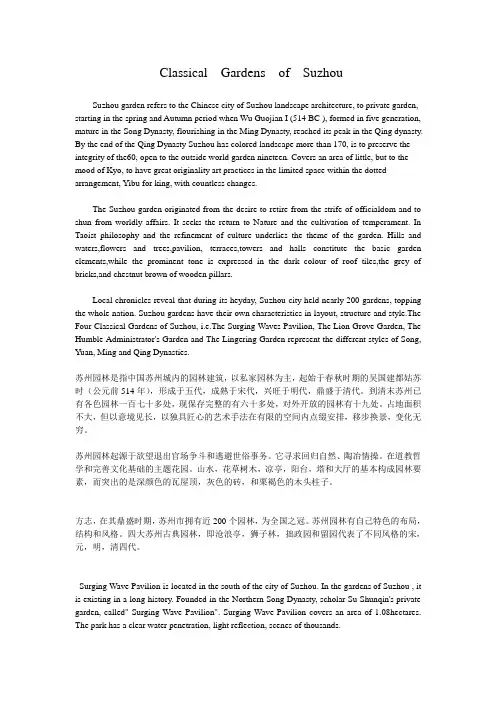
Classical Gardens of SuzhouSuzhou garden refers to the Chinese city of Suzhou landscape architecture, to private garden, starting in the spring and Autumn period when Wu Guojian I (514 BC ), formed in five generation, mature in the Song Dynasty, flourishing in the Ming Dynasty, reached its peak in the Qing dynasty. By the end of the Qing Dynasty Suzhou has colored landscape more than 170, is to preserve the integrity of the60, open to the outside world garden nineteen. Covers an area of little, but to the mood of Kyo, to have great originality art practices in the limited space within the dotted arrangement, Yibu for king, with countless changes.The Suzhou garden originated from the desire to retire from the strife of officialdom and to shun from worldly affairs. It seeks the return to Nature and the cultivation of temperament. In Taoist philosophy and the refinement of culture underlies the theme of the garden. Hills and waters,flowers and trees,pavilion, terraces,towers and halls constitute the basic garden elements,while the prominent tone is expressed in the dark colour of roof tiles,the grey of bricks,and chestnut brown of wooden pillars.Local chronicles reveal that during its heyday, Suzhou city held nearly 200 gardens, topping the whole nation. Suzhou gardens have their own characteristics in layout, structure and style.The Four Classical Gardens of Suzhou, i.e.The Surging Waves Pavilion, The Lion Grove Garden, The Humble Administrator's Garden and The Lingering Garden represent the different styles of Song, Y uan, Ming and Qing Dynasties.苏州园林是指中国苏州城内的园林建筑,以私家园林为主,起始于春秋时期的吴国建都姑苏时(公元前514年),形成于五代,成熟于宋代,兴旺于明代,鼎盛于清代。
